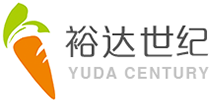The role of chitosan in aquaculture
Release:2025.10.27The role of chitosan in aquaculture: Chitin extracted from shrimp and crab shells is a natural polysaccharide with abundant content in nature. Chitosan is its main derivative, but its high viscosity, large molecular weight, and difficult dissolution limit its application, thus giving rise to chitosan oligosaccharides. It is generally believed in China that substances polymerized from glucosamine with a polymerization degree of 2-20 are collectively referred to as chitooligosaccharides. Due to their low molecular weight, they can be directly absorbed and utilized by animal intestines, and are also the only alkaline oligosaccharides with a positive charge in nature. Therefore, chitosan oligosaccharides have high biological activity, making them widely used for antibacterial, anti-inflammatory, immune enhancement, and antioxidant functions, giving them unique advantages in aquaculture and complementing chitosan.
1.growth promotion
The main mechanism of chitosan oligosaccharides promoting growth is to increase the maximum mucosal immune organ of aquatic products - the intestine, so as to increase the height of folds and the thickness of the intestine. This not only improves the absorption of nutrients by fish, but also resists the invasion of bacteria or viruses by increasing the secretion of bile and pancreatic juice. Long term consumption of chitosan oligosaccharides in aquatic products can increase the content of digestive enzymes such as trypsin, pancreatic lipase, and pancreatic amylase in the intestine, allowing the feed to be fully digested and promoting growth.
2.immune enhancement
The immune cells, enzymes, and regulatory factors in the aquatic immune system play a crucial role in combating pathogens. Chitosan oligosaccharides can stimulate immune cells to secrete immune factors, which play a key role in non-specific immunity, specific immunity, cell growth, and tissue repair. The active amino groups on the surface of oligosaccharides can form new glycopeptide bonds with proteins on the cell surface and effectively activate the activity and function of immune cells, including macrophages.
3.Regulating gut microbiota
Chitosan oligosaccharides can inhibit the activity of harmful bacteria (such as Escherichia coli) and effectively help beneficial bacteria (such as bifidobacteria) reproduce on the intestinal wall. The positive charge inherent in oligosaccharides can bind well with the negative charge of Gram negative bacteria, causing them to lose their activity and be excreted from the body. Chitosan oligosaccharides and chitosans can also inhibit pathogenic bacteria such as Vibrio anguillarum and Vibrio parahaemolyticus at a certain concentration, so even if harmful bacteria are excreted with feces, they will lose their activity and reduce the secondary pollution of excreta on water quality.
4.water purification
Chitosan and chitosan oligosaccharides can both have bactericidal and disinfecting effects on aquaculture waters. Chitosan has a high molecular weight and viscosity, and can adsorb and flocculate harmful macromolecules such as harmful bacteria, feed residues and algae after eutrophication, and aquatic feces. Meanwhile, due to the long-chain network structure of chitosan, it can also effectively chelate heavy metals in water, preventing them from being absorbed into the body even if ingested by aquatic products.
The combination of chitosan and chitosan oligosaccharides as a new type of feed additive has broad prospects for use. The abundant resources of shrimp and crab shells are safe and non-toxic, and can be consumed for a long time without any side effects. At the same time, it can also protect aquatic animals from the inside out: internally, it can enhance immunity and promote growth; Externally, it can improve the quality of water and reduce the damage caused by the external environment. Chitosan and oligosaccharides will become new highlights in aquaculture.
Yuda Century As a supplier of chitosan application solutions with 21years experience.
Our main products: chitin, chitosan, Hydroxypropyl Chitosan, Hydrochloride Chitosan, Chitosan Lactate, Carboxymethyl Chitosan.
With origin: Chitosan Fresh North Atlantic Shrimp Shell/Crab Shell Origin
Chitosan Aspergillus Niger Origin
Chitosan Agaricus bisporus Origin mushroom
More details and solutions ,please contact us.



